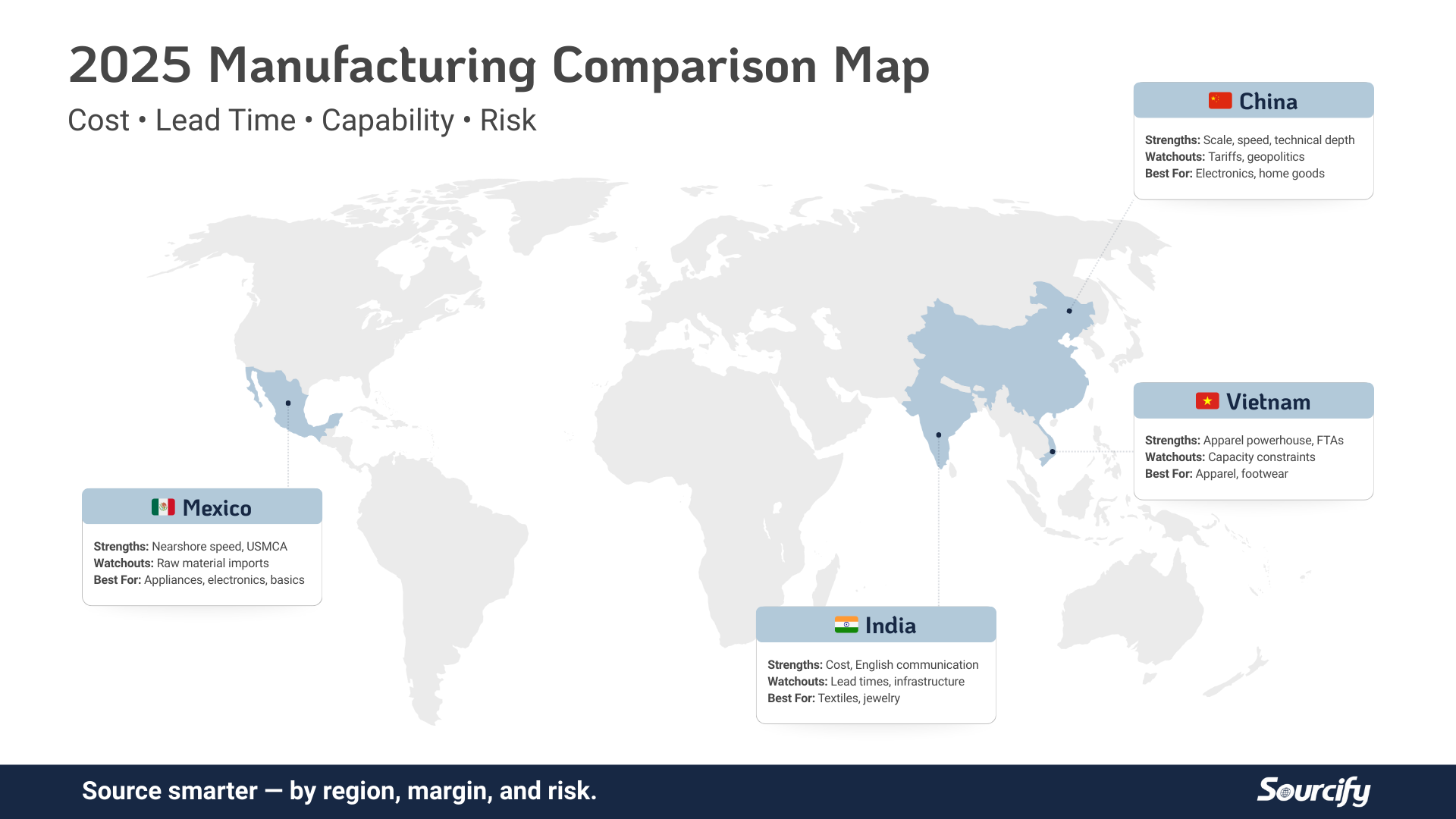eCommerce brands track a lot of data — web traffic, conversion rates, customer retention and more. But while the majority of eCommerce stores do a good job of tracking sales and marketing-related metrics, they often overlook manufacturing data.
In reality, manufacturing data can prove just as important for keeping your eCommerce business running smoothly. The right data can help you choose better partners, reduce manufacturing costs and ensure you always have an appropriate level of stock for your customers.
With that in mind, be sure to analyze these key manufacturing-related data points:
-
First Pass Yield
When working with a manufacturer for a new product, you want to be sure that the product line will be manufactured correctly the first time around. You don’t want to waste time or money on defective products.
One way to evaluate the efficiency of a manufacturer’s process is to measure their first pass yield. To measure this, divide the number of quality units by the total number of units produced over a period of time. The higher the resulting percentage, the better a manufacturer is performing.
On the other hand, if a company has a low first pass yield rate, this could indicate issues with their raw materials, machinery or processes that result in a high number of defective products. This can help you identify low-performing partners who you might need to reconsider doing business with.
-
Gross Profit Margin Per Product
Many eCommerce brands look at the gross profit margin for the company as a whole — but you should also take a more granular approach and evaluate the gross profit margin of each individual product.
To measure the gross profit margin of a product, you’ll need to subtract manufacturing and supply chain costs from the sales price of the individual product. When possible, you should also subtract a portion of your marketing and overhead expenses from the profit generated by a particular product line.
By doing the math, you can determine whether an individual product is actually generating a profit for your business. A low or negative gross profit margin could indicate that you need to adjust your pricing strategy, potentially switch to a less expensive supplier or even eliminate a product altogether.
-
Manufacturer Downtime
Labor downtime can be another helpful manufacturing data point that helps you evaluate manufacturing partners. Whether the result of scheduled maintenance or an unexpected issue, production downtime can reduce your partner’s production capacity and result in potentially significant delays in receiving finished goods.
Production downtime is usually measured as a percentage. Total downtime is divided by a facility’s planned operating time. This number is then multiplied by 100 to get a downtime percentage, telling you how much of a facility’s planned production hours are lost to downtime.
The average manufacturer experiences downtime percentages of one to 10%. A partner with higher than expected downtime could experience significant delays in fulfilling product orders, making it hard to keep your eCommerce store efficiently stocked.
-
Lead Times
A manufacturing partner’s processes and location will have a significant influence on lead time — how long it takes for finished products to get from the manufacturing facility to your own warehouses or directly to your customers. Successful eCommerce businesses often partner with overseas manufacturers with longer lead times, but they do so with that lead time built into their production and marketing schedule.
That being said, lead times are often affected by a variety of outside factors. For example, historic low water levels at the Panama Canal have resulted in significant shipping bottlenecks, with many ships waiting for an extended period at the canal or scheduling alternate routes. Such disruptions, though not directly tied to the manufacturer themselves, must be taken into consideration when evaluating which partners you will use.
By tracking trends in lead times and monitoring supply chain disruptions, you can better identify when you might need to switch partners to maintain adequate levels of inventory. This doesn’t necessarily require dumping one partner, but instead alternating suppliers as needed based on current supply chain conditions.
-
Demand Patterns/Inventory Turnover
“Just in time” inventory management can be a powerful tool for running your eCommerce business more efficiently, focusing your efforts on ordering and receiving inventory as close as possible to when it will actually be needed, as opposed to keeping excess inventory on your shelves.
To keep manufacturing and supply chain operations flowing smoothly with this type of inventory management, you must carefully track your overall demand patterns and inventory turnover, along with your lead times. High inventory turnover means your products are being sold at an efficient rate, rather than piling up in a warehouse. However, you must be careful to not under stock your items, as this could lead to stockouts during periods of high demand, which could result in lost sales.
Tracking inventory turnover and demand patterns (particularly for seasonal spikes in demand) will help you plan accordingly with manufacturing partners so you always have the appropriate level of stock on hand.
Make the Most of Your Manufacturing Processes
By analyzing the performance of your manufacturing partners in conjunction with your own needs based on demand for your products, you can make better informed decisions about who to partner with and how to make the most of your current partnerships.
By using data to streamline your manufacturing processes, you’ll be better equipped to serve your customers well while also improving your profit margins.




